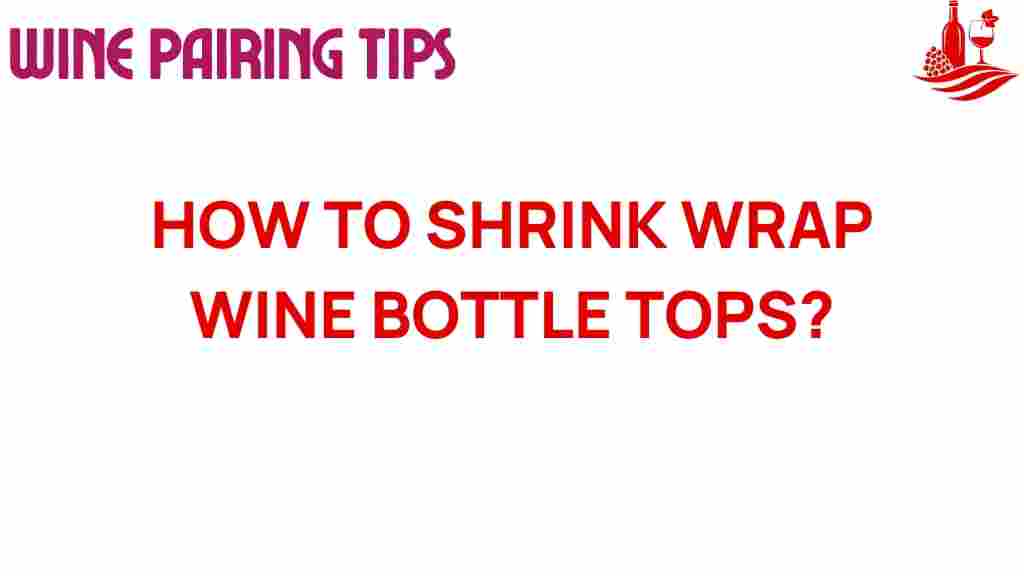Mastering the Art of Shrink Wrapping Wine Bottle Tops
Shrink wrapping is an essential technique in the wine industry, used primarily for packaging, sealing, and preserving wine bottles. By mastering the art of shrink wrapping wine bottle tops, vintners can ensure that their products maintain integrity and freshness, while also providing an attractive presentation for consumers. In this article, we will explore the various aspects of shrink wrap, the bottling process, and effective sealing techniques that enhance wine preservation. Let’s delve into the craftsmanship behind this important packaging method.
Understanding Shrink Wrap in Wine Packaging
Shrink wrap is a plastic film that shrinks tightly over an object when heat is applied. In the context of wine bottles, it serves multiple purposes:
- Protection: Shrink wrap provides a barrier against dust, dirt, and moisture.
- Sealing: It ensures that bottles are sealed securely, preventing tampering.
- Presentation: Aesthetically, shrink wrap can enhance the appearance of wine bottles, making them more attractive on shelves.
As consumers become more discerning, the role of packaging in the wine industry has become increasingly crucial. Shrink wrap not only protects the product but also communicates quality and attention to detail.
The Bottling Process: Incorporating Shrink Wrap
Step 1: Preparing the Wine Bottles
Before applying shrink wrap, it is vital to ensure that the wine bottles are clean and dry. Any residue or moisture can affect the adhesion of the shrink wrap. Here’s how to prepare:
- Inspect each bottle for cleanliness.
- Use a soft cloth to wipe down the necks of the bottles.
- Ensure that the bottles have been properly corked or sealed.
Step 2: Selecting the Right Shrink Wrap
Choosing the appropriate shrink wrap is critical for successful sealing. Factors to consider include:
- Material: PVC, polyolefin, and polyethylene are common materials used.
- Thickness: Thicker wraps provide better protection but may require more heat to shrink.
- Size: Ensure that the shrink wrap is compatible with the bottle size.
Step 3: Cutting the Shrink Wrap
Once you have selected the right shrink wrap, cut it to the required size. A good rule of thumb is to cut the wrap about 2 inches longer than the height of the bottle. This allows enough material to cover the neck and cap securely.
Step 4: Applying the Shrink Wrap
To apply the shrink wrap effectively, follow these steps:
- Place the cut shrink wrap over the neck and cap of the wine bottle.
- Ensure that the wrap is centered and evenly distributed.
- Use a heat gun or shrink tunnel to apply heat. Start from the bottom and work your way up to avoid bubbles.
As the heat is applied, the shrink wrap will begin to retract and conform tightly to the bottle. Always maintain a safe distance with the heat source to prevent damage to the bottle or the wrap.
Step 5: Cooling and Inspecting the Seal
After the shrink wrap has been applied, allow it to cool for a few moments. This cooling process solidifies the seal, ensuring a tight fit. Inspect each bottle to confirm that the shrink wrap has adhered properly and that there are no wrinkles or gaps.
Troubleshooting Shrink Wrapping Issues
Even experienced vintners may encounter challenges during the shrink wrapping process. Here are common issues and their solutions:
- Wrinkles in the Shrink Wrap: Ensure that the heat is applied evenly and that the wrap is not too thick.
- Poor Adhesion: Check the cleanliness of the bottles and ensure they are dry before applying the shrink wrap.
- Inconsistent Shrinkage: Adjust the temperature of the heat gun or shrink tunnel to achieve uniform results.
By addressing these issues promptly, you can ensure that your shrink wrapping process is efficient and effective.
Benefits of Shrink Wrapping for Wine Preservation
Properly sealing wine bottles with shrink wrap plays a critical role in wine preservation. Here are some benefits:
- Protection Against Oxidation: Shrink wrap helps maintain the integrity of the cork seal, preventing air from entering the bottle.
- Extended Shelf Life: A secure seal can prolong the wine’s freshness, allowing it to be stored for longer periods.
- Consumer Confidence: A well-packaged wine bottle signals quality, encouraging customers to trust the product.
Craftsmanship in Shrink Wrapping
Mastering the art of shrink wrapping is not just about technique; it’s about craftsmanship. Each bottle represents a labor of love, and the final presentation reflects the quality of the wine. Attention to detail in the shrink wrapping process can set a winery apart in a competitive market.
Consider incorporating unique designs or colors in your shrink wrap to align with your brand identity. Custom shrink wrap can enhance the visual appeal and make your wine stand out on the shelves.
Conclusion
In conclusion, mastering the art of shrink wrapping wine bottle tops is a vital skill for anyone in the wine industry. From the bottling process to effective sealing techniques, each step contributes to the overall quality and presentation of the wine. By understanding the importance of shrink wrap, you can enhance wine preservation and elevate your craftsmanship.
For further information on wine packaging techniques, visit this resource. Additionally, if you’re looking for high-quality shrink wrap materials, check out this supplier.
With practice and attention to detail, you can become proficient in shrink wrapping, ensuring that your wine bottles are not only protected but also beautifully presented to your customers.
This article is in the category Tips and created by Wine Pairing Tips Team
